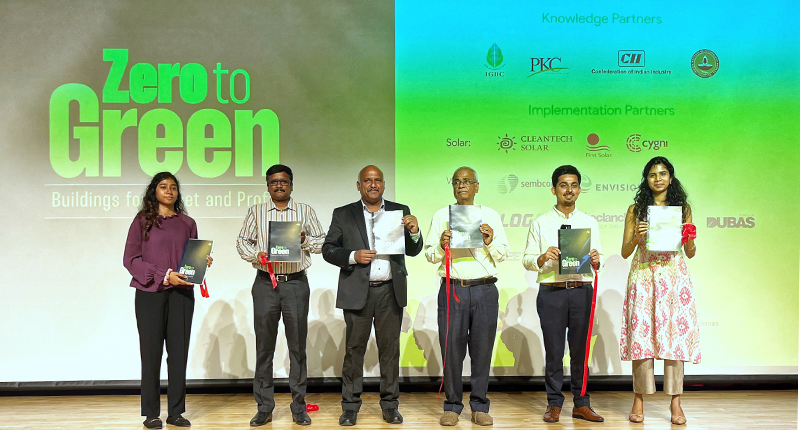India has almost 40K commercial complexes—office buildings, shopping malls, restaurants, etc—and the number will triple by 2030: Report
IIT Madras Research Park, which runs a 1.2 million sq ft building that provides plug-and-play facilities for corporate R&D centres, reckons that it can save *4 crore a year just by buying wind and solar power and storing it.
The Research Park, which also houses the IIT Madras Incubation Cell that has spawned over 300 start-ups, has come to this conclusion after a detailed study. It is now implementing the plan.
“Today, I pay *12.30 a kWhr of electricity,” says Ashok Jhunjhunwala, the septuagenarian professor- cum-entrepreneur, who set up the 400-crore IIT Madras Research Park on 11.5 acres on Chennai’s IT corridor. “But with wind, solar and storage, the cost of my electricity works out to 9,” Jhunjhunwala told businessline on Friday.
IIT Madras Research Park’s study, titled “Zero to Green Buildings for Planet and Profit” was launched on Friday at the ‘Climafix 2023’ summit, organised at the research park by the renewable energy consultancy Energy Alternatives India (EAI). The summit brought together over 500 start-ups and some 200 investors.
TO BUY SOLAR, WIND
The building already has 1-MW of rooftop solar. Jhunjhunwala said that IIT Madras Research Park Ltd, a Section 8 (not-for-profit) company, has contracted to buy electricity 4 MW of solar and 2 MW of wind on open access from energy companies in Tamil Nadu on a ‘group captive’ basis (which means the research park company will take at least 26 per cent stake in the energy company and purchase at least 51 per cent of the power generated).
Battery storage as well as chilled water storage are to be brought into play. About 90 per cent of the building’s electricity requirements will be met by green energy.
IIT Madras Research Park will invest 21.53 crore and get 3.94 crore of annual savings; the investment will be paid back in five-and-half years after which all the electricity is free.
The report, which gives detailed calculations for cost-benefit analysis, notes that India has about 40,000 commercial complexes office buildings, shopping malls, restaurants, etc and the number will triple by 2030. “The per-unit tariff for commercial customers is, on an average, 40 percent higher compared with residential and industrial tariffs across the country,” it says. customers, Industrial paying about 10 a kWhr, will also save, Jhunjhunwala noted, adding that with scale, it is possible to bring down the average cost of purchased and stored green energy to under *8 a kWhr.
This report happens to come at a time when the MSME sector in Tamil Nadu has announced a strike on Monday to protest against the State utility’s tariff hike.
Publication: Hindu Business Line
Read more by clicking on the link to the featured article below:
![]()


